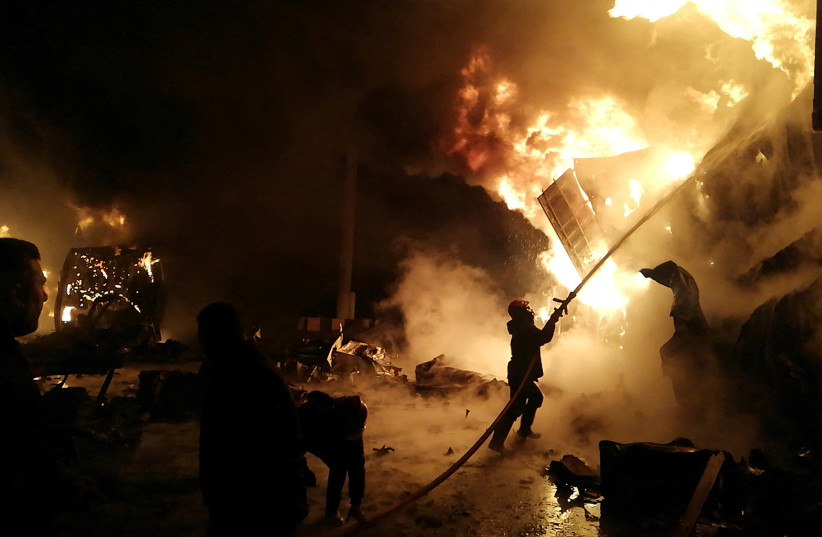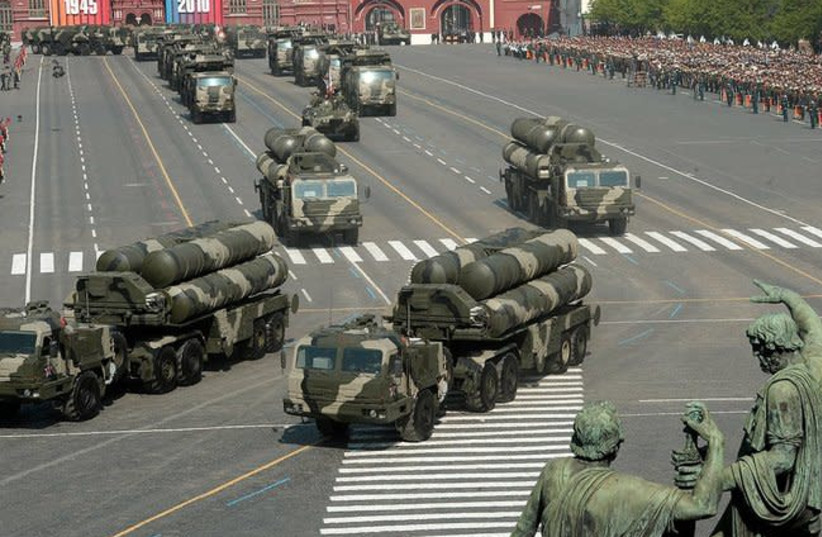Since Iran has deployed new air defense batteries in Syria last year, the IAF has had to change how they carry out their strikes

Iran has used advanced air defense batteries against Israeli planes carrying out war-between-war operations in Syria, in an attempt to challenge Israel Air Force pilots.
Tehran first deployed the batteries to Syria last year as Israeli strikes against Iranian weapons and military infrastructure have intensified.
Since Israel began its war-between-wars campaign (known as MABAM in Hebrew) in 2013, it has carried out thousands of strikes in an attempt to thwart Iranian entrenchment and the smuggling of advanced weapons to Hezbollah in Syria and Lebanon. According to foreign reports, it has also carried out strikes in Iraq and Yemen.
The Syrian Arab Army is equipped with a range of older Russian-made surface-to-air missile systems such as the SA-2, SA-3, SA-5, SA-6,-SA-8, SA-11, SA-17, SA-19, SA-22, and Pantsir 1 air defense systems.
Russia has also deployed their advanced S-300 and S-400 air defense batteries but has not given them to the Syrians, rather they man themselves. They have yet to be used against Israeli jets, in part due to the ongoing safety mechanisms in place between Jerusalem and Moscow.
While the response time by Syrian SAMs to Israeli operations has become quicker and they have fired over a thousand missiles towards Israeli jets in the past seven years, they have been unable to stop them from carrying out their missions.
The deployment of Iranian batteries to the arena is an attempt to intercept more Israeli munitions than before.
Iran also separates the radars of their SAMs from the missile launchers, leading the Israel Air Force to change how it acts during operations, including by having larger formations so that more targets can be struck at once rather than having jets return to the same target and risk being downed.
In 2018, an F-16 crashed in northern Israel after it was struck by an SA-5 missile fired by Syrian forces during an Israeli operation. Syrian missiles have also landed in Israel in recent years, including this year when shrapnel from one missile hit northern Tel Aviv, and when another errant interceptor missile landed close to the Dimona nuclear site in the Negev Desert.
In July 2020, Ali Abdullah Ayyub, the Deputy Commander of Syrian armed forces and the Chief of Staff of Iran’s Armed Forces Major General Mohammad Bagheri signed an agreement to broaden bilateral military cooperation and to develop a robust air defense system for the regime of Bashar Assad.

“From now on Iran will strengthen its ties with Syria even more, on all levels,” Bagheri said at the time.
Since their introduction, the IAF has been studying the Iranian batteries that have a different architecture than the Russian batteries. While the IAF continues to carry out their missions successfully over Syria, due to being a new and different system that Israel does not fully understand yet, the Iranian batteries are a new challenge to Israel.
The IAF understands that the Islamic Republic’s defense industry is robust and constantly works to improve and manufacture systems and platforms that can threaten Israel and other countries in the region.
In October 2021, Iran carried out a large-scale aerial defense drill called Defenders of the Velayat Sky 1400 that showcased the capabilities of upgraded systems and weapons including missiles including cruise missiles, radar, surveillance, electronic warfare, communication systems, advanced manned and unmanned stealth drones, and optical surveillance networks.
During the drill, Iran used it 3rd Khordad, Mersad, Talash, Khordad 15, Majid, and Dezful SAM systems.
Following the drill, Iran’s Supreme Leader Ayatollah Ali Khamenei said that “in the face of these realities, the enemy must consider Iran’s power and defense capabilities in its calculations and decisions.”
Content retrieved from: https://www.jpost.com/middle-east/iran-news/article-700471.
